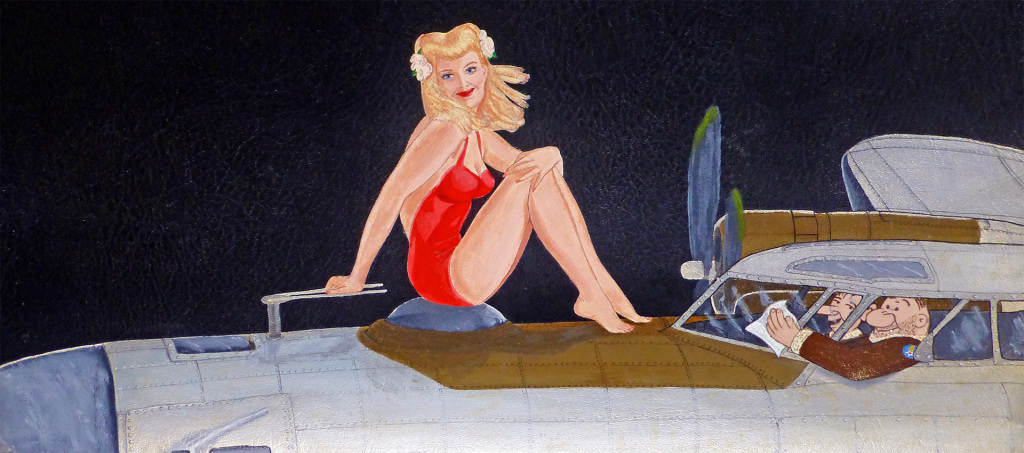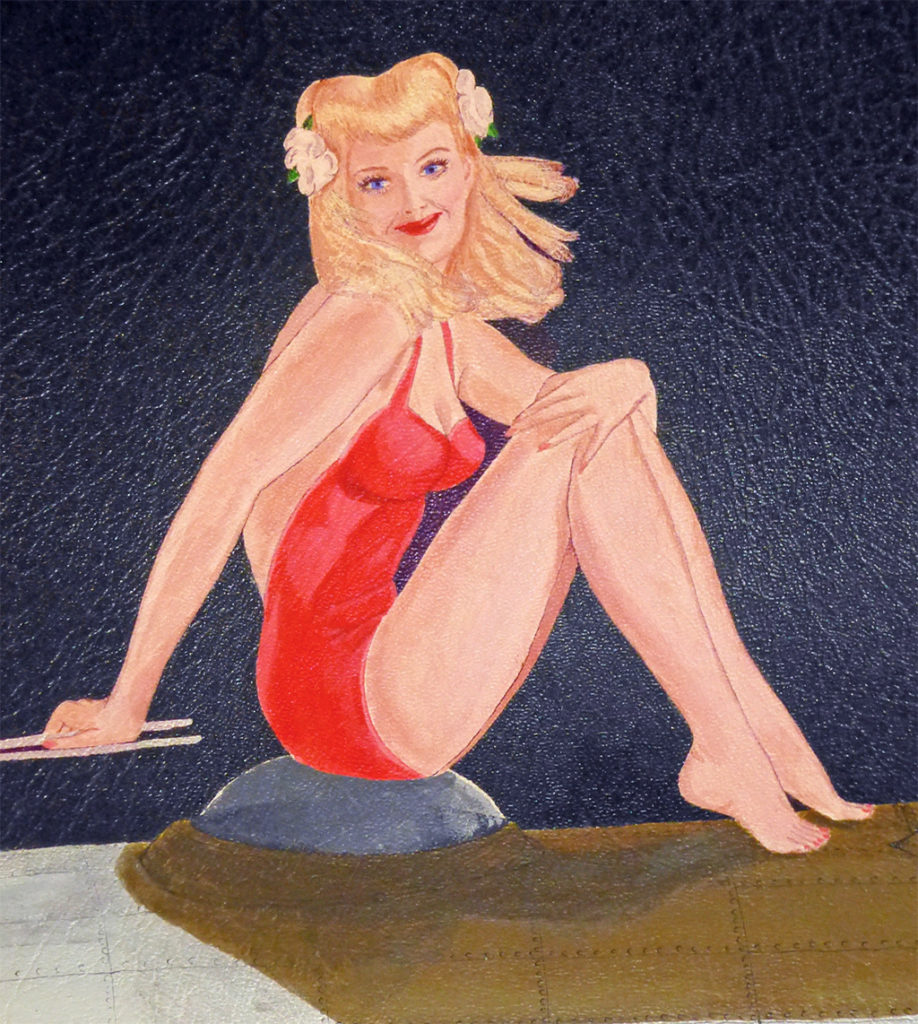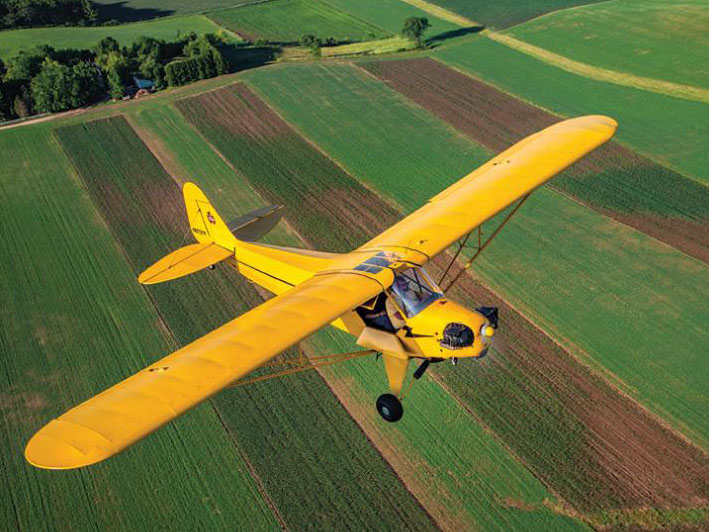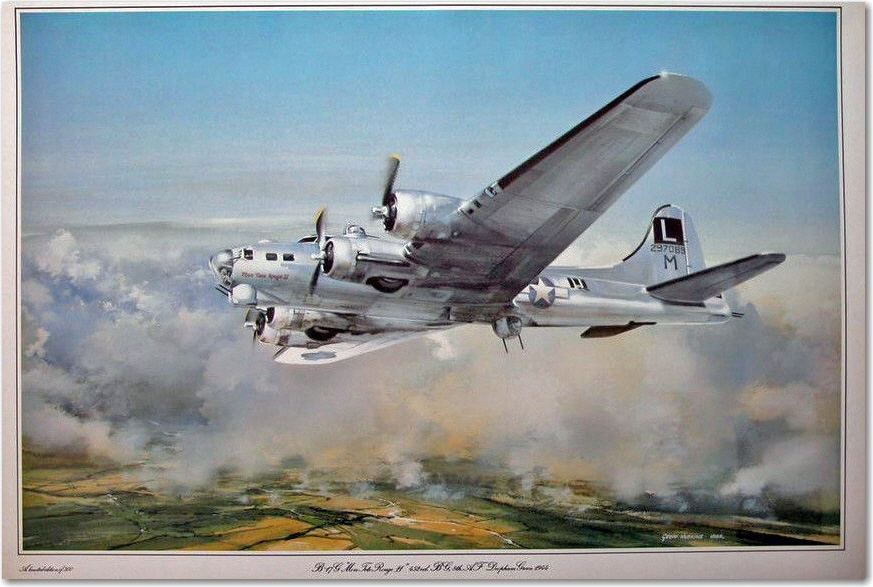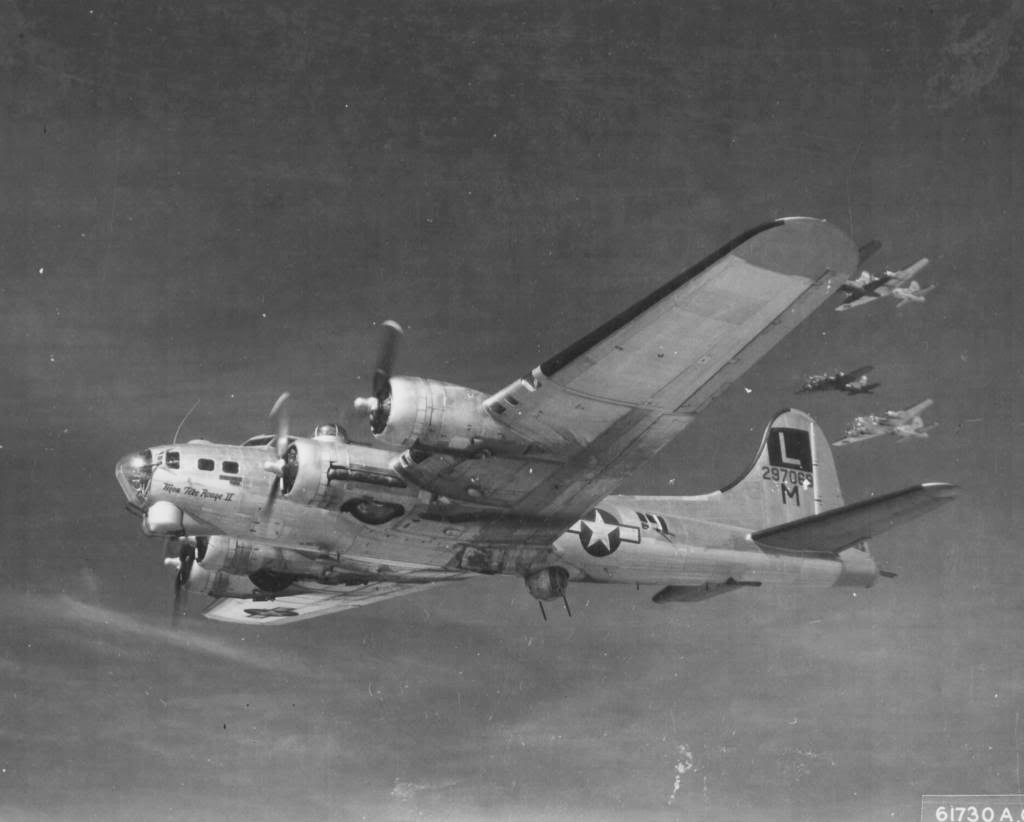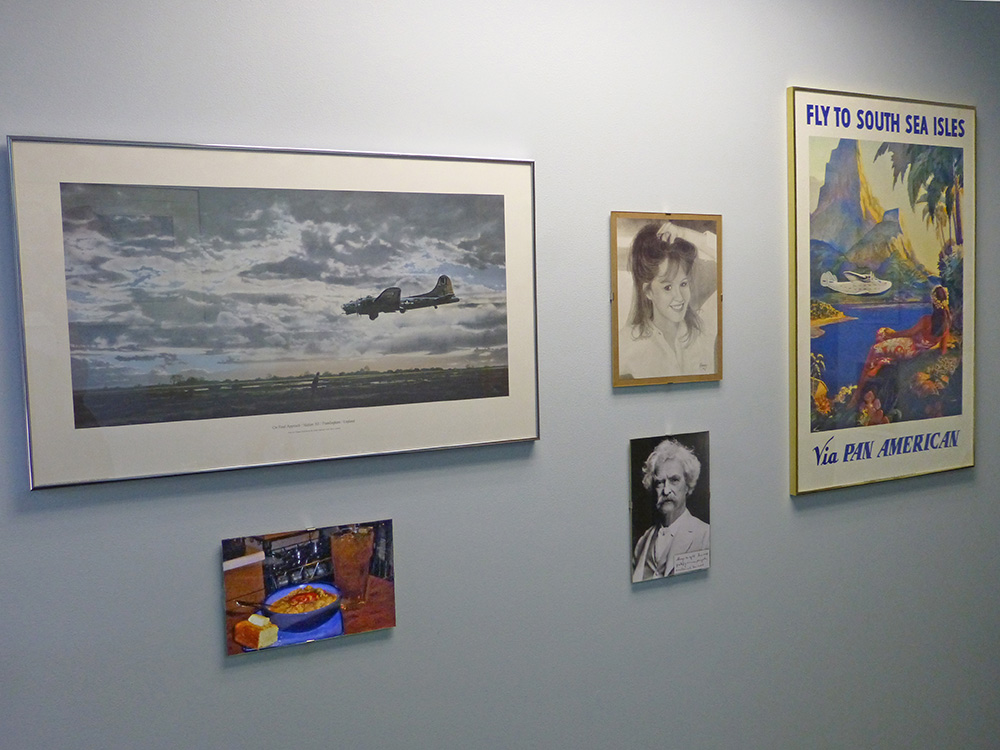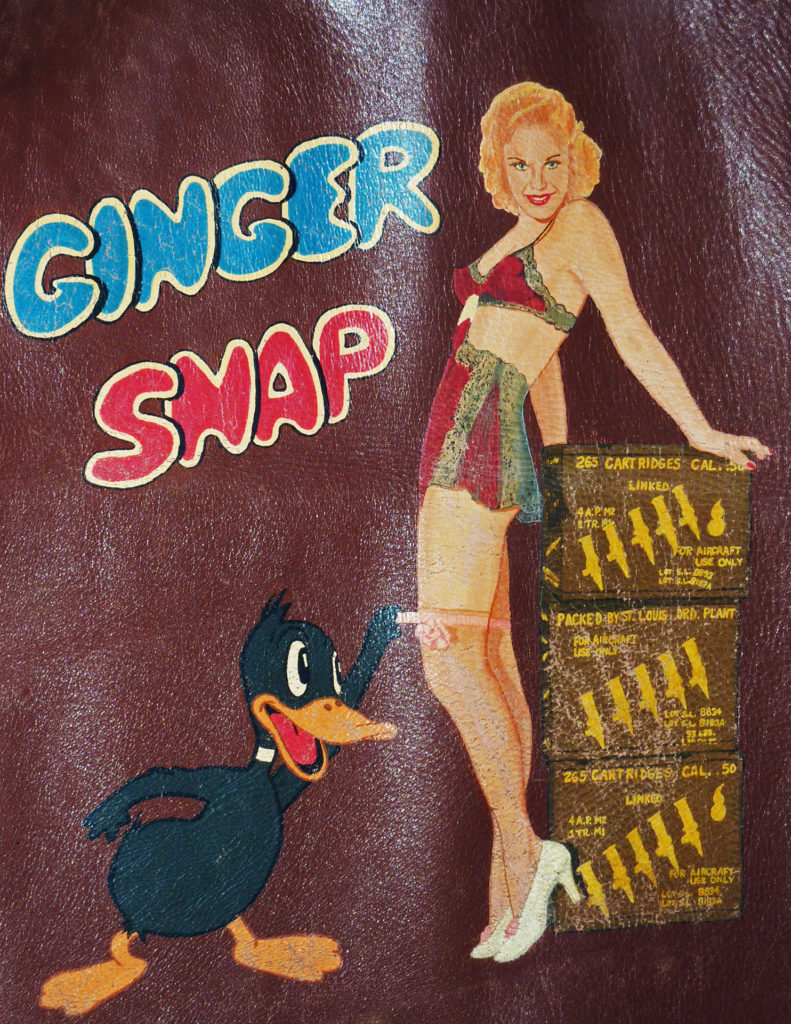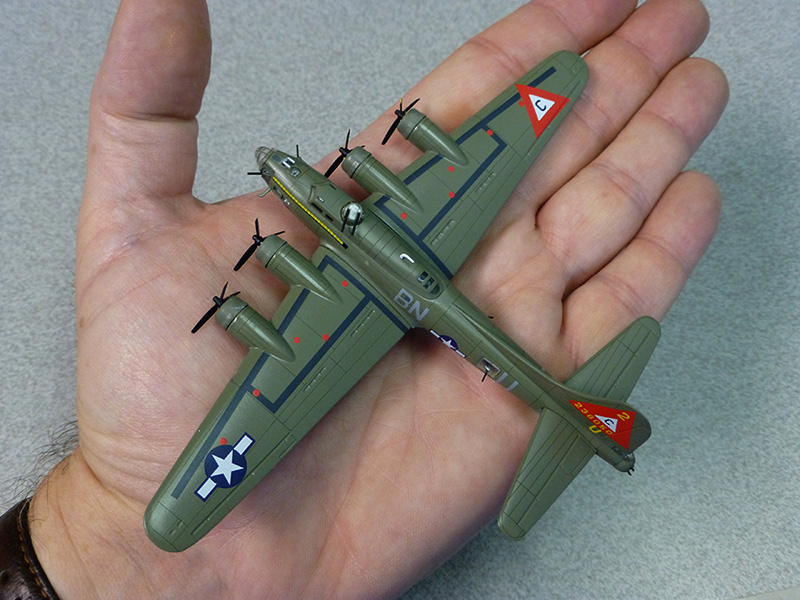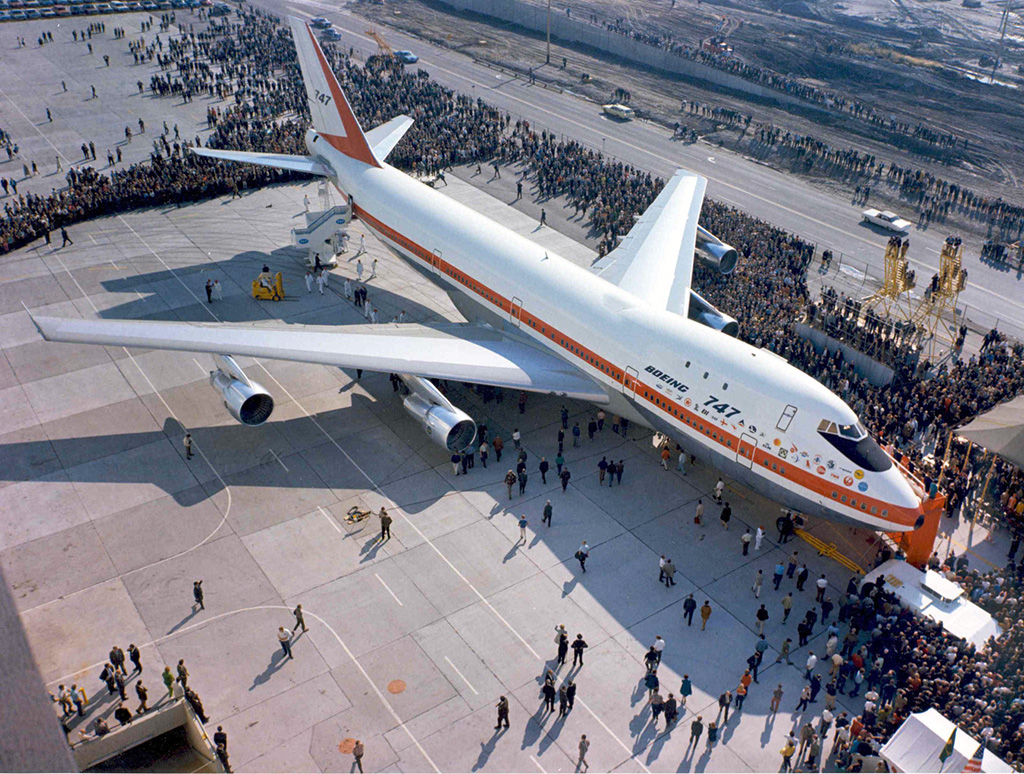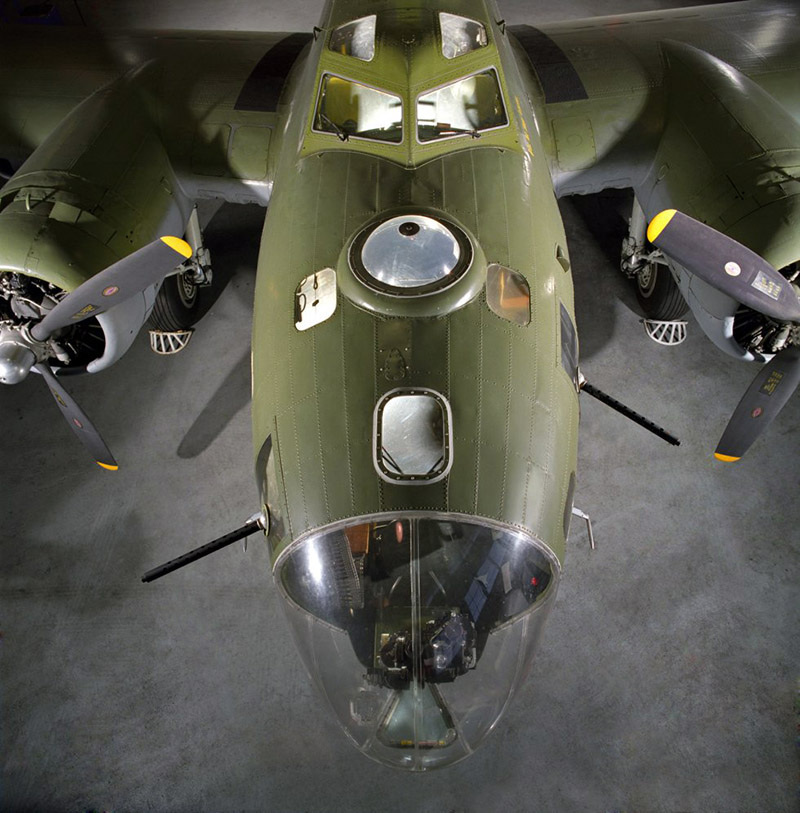I was poking around the web looking at flight jacket artwork last night and was somewhat startled when I bumped into a photo of one of my paintings that I had nearly – okay, maybe fully – forgotten was used for the frontispiece of Hell Bent for Leather by Nelson and Parsons many years ago. I of course remember that the cover of the book featured one of my paintings, but the other paintings of mine that are inside the book tend to fade into the background of my mind.
The frontispiece painting is on a large faux leather portfolio case, with the tableau 27″w x12″h on the bottom half of the case. I realised today that I never did get a good photo of the painting in digital form — the photo I took for the authors was strictly analogue, the negative long gone or at the least buried amongst thousands of others — so I dug the case out from behind a bookcase, dusted it off, and rectified that situation this morning (you can click these for a larger size):
The pin-up is based on this Alberto Vargas painting, which was the gatefold artwork in the August 1943 issue of Esquire magazine:
Here’s a closer look at my variation:
The pilot and copilot are the WWII cartoon characters Hubert and Sad Sack, respectively. Sad Sack appeared in the U.S. Army Yank weekly magazine and the Hubert panels were in the Army’s Stars and Stripes newspaper, some samples below:
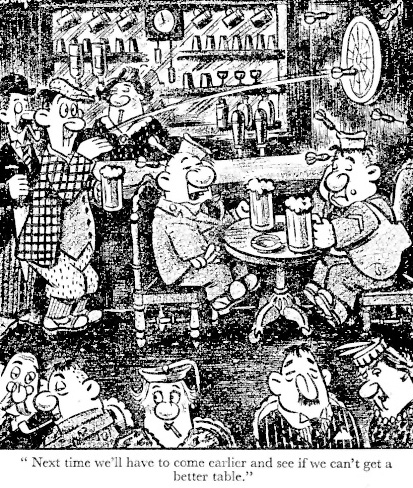
 Last night, I also ran into this high-quality copy of a photograph that I had seen only in much smaller form years ago in Vintage Aircraft Nose Art:
Last night, I also ran into this high-quality copy of a photograph that I had seen only in much smaller form years ago in Vintage Aircraft Nose Art:
The name is a reference to Rosie the Riveter, of course. Many jacket artists in WWII just couldn’t capture faces well, but this artist certainly could. I love the care that went into this painting – again, you can click to see the detail – and note that it’s from the 401st Bomb Group based in Deenethorpe, Northamptonshire, the group that had the finest jacket paintings in WWII. However, the story behind the aircraft is a sad one indeed. The entire crew of the B-17 Rosie’s Sweat Box died in a takeoff accident at Deenethorpe exactly 70 years ago this past Wednesday.
To interject a bit more reality:

